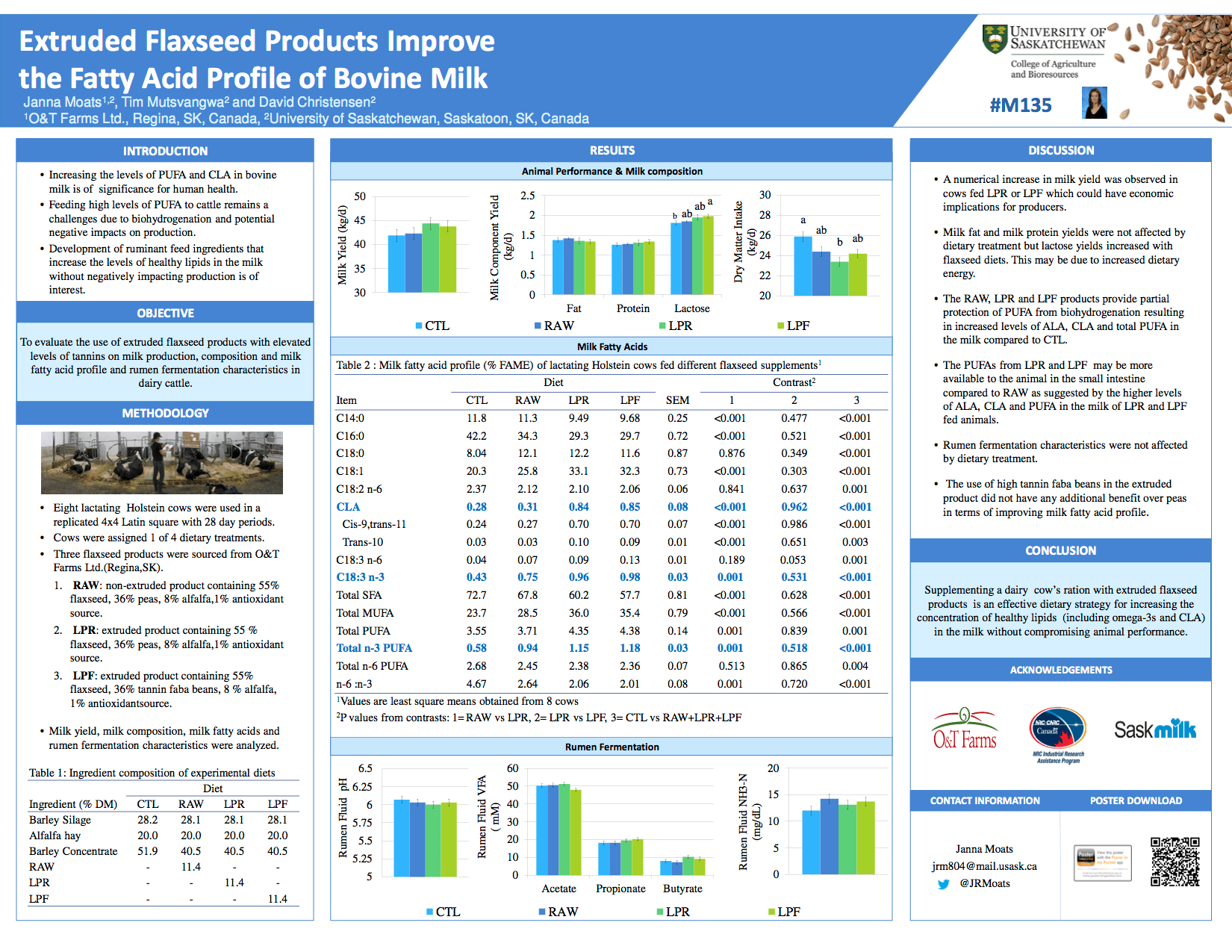Animal Scientists from the University of Saskatchewan find that supplementing dairy cow rations with linPRO-R is an effective strategy for increasing the concentration of omega-3 fatty acids in milk while maintaining animal performance.
The human health benefits of omega-3 fatty acids are well recognized by health professionals and consumers. These fatty acids have been suggested to improve cardiovascular health, reduce inflammation and protect against certain forms of cancer. Unfortunately, the diet of most North Americans is lacking in these important nutrients. Therefore, increasing consumer access to these nutrients could contribute to the prevention of serious human disease.
Feeding flaxseed-or any form of unsaturated fat- to cattle is complex due to the nature of the animal’s digestive system. The fat must be in a protected form to prevent digestive disturbances in the rumen; however, it must also be in a form that is easily digested in the small intestine so the fats can be incorporated into the milk.
Extrusion processing is a heat treatment that can be applied to oilseeds and has been suggested to provide some protection of the unsaturated fats from the rumen environment and thereby increase omega-3 content in the milk.
To helps address this issue, O&T Farms Ltd. collaborated with the University of Saskatchewan on a study that focused on project increasing the concentration of healthful fats in cow’s milk through dietary means.
The trial was conducted at the University of Saskatchewan’s Rayner Dairy Research and Teaching Facility (Saskatoon, SK.) using unprocessed flaxseed and linPRO-R as the test ingredients to be compared to a control ration.
The results show that the fatty acid composition of the milk was dramatically altered among the flaxseed treatments. Conventional dairy milk contains approximately 0.5% total omega-3 as a percentage of fatty acids and feeding the linPRO-R omega-3 feed ingredient more than double the total omega-3 fatty acid content of milk.
In addition to the increased levels of omega-3s, results of this trial also demonstrated a three-fold increase in another human health related fatty acid, conjugated linoleic acid (CLA) as well as a decrease in the level of saturated fatty acids, when linPRO-R was fed.
Although feeding unsaturated fats, such as those found in flaxseed, may improve the milk for consumers we must also consider the impact these feedings strategies may have on the cow. For this reason, the research included an evaluation of flaxseed products on dry matter intake (DMI), milk yield, milk composition and rumen fermentation characteristics.
Dry matter intake of the animals was similar among all treatments while milk yield tended to increase with the inclusion of flaxseed in the diet, especially if that flaxseed was in the form of linPRO-R. Additionally, linPRO-R resulted improvemed feed efficiency and maintained milk components. Rumen fermentation characteristics were also evaluated with no observed differences between treatments.
The successful supplementation of flaxseed in a cow’s diet appears to largely depend on the form in which it is fed. Based on these findings, it was concluded that feeding linPRO-R to dairy cattle is an effective strategy for increasing omega-3 fatty acids in the milk while maintaining production within high performance dairy cattle.
Results of this research garnered acclaim at the 2015 American Dairy Science Association Annual Meetings having placed 2nd in the graduate student poster presentation and 1st in the ADSA graduate student 3-mintute thesis competitions.
The award-winning poster is shown here and details the all-natural omega-3 opportunities available for dairy producers and processors.

To read the complete M.Sc. thesis related to this study, visit the University of Saskatchewan’s e-commons webpage.





